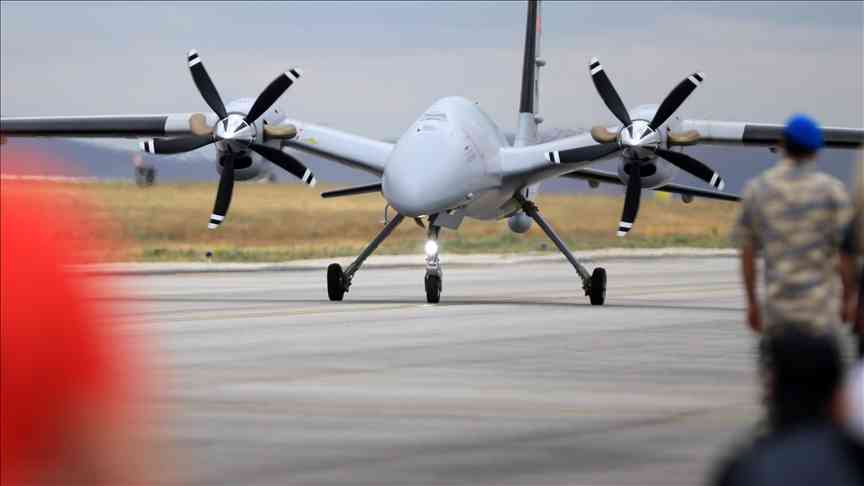
The India-Pakistan military conflict may not be going on at the moment but the situation between the two countries remains tense. Regarding the timeline of the attack, the trigger for India’s retaliation was a terrorist attack, which took place on April 22, 2025. Five terrorists, opened fire on a group of tourists in the Baisaran valley near Pahalgam, killing 26 people and injuring more than 20.
The attackers, dressed in military uniforms, targeted mostly Hindu tourists, although the victims did include a Christian and a Muslim resident of the area. Responsibility for the attack was initially claimed by the Resistance Front, (TRF), a terrorist organisation that is an offshoot of the Lashkar E Taiba. However, a few days later, the TRF denied responsibility. India accused Pakistan of supportin cross-border terrorism.
India responded to Pakistan on May 7 with Operation Sindoor which is considered India’s largest and most sophisticated operation as it was a combination of missiles, drones and air strikes. Tension between India and Pakistan escalated with attacks on both sides including air and missile strikes and bombings along the Line of Control (LoC) causing at least 66 deaths. However, on May 10, a ceasefire was reached through direct military contacts between the two sides, despite US statements that it played a significant role.
In the midst of this volatile situation between India and Pakistan, it is necessary to assess the military means each side has at its disposal in order to make safe predictions about the outcome of a conflict between the two countries if the conflict between them were to escalate again.
Pakistani drones proved ineffective during the recent military clashes with India, as almost all of them failed to hit targets in the rival country. On the contrary, Indian drones carried out attacks on Pakistani military installations with precision. This created embarrassment for the Pakistani army because the drones manufactured by Turkey and China proved to be useless as after the Indian attack the wreckage of Pakistani intercepted drones could be seen from everywhere.
International news correspondents reported that Pakistani drones appearing as orange dots over the Indian sky flashed and faded as Indian missiles intercepted them. Pakistan has a limited number of drones and depends on China and Turkey for their supply. In contrast, “India’s drones are much more sophisticated as they can be used in all three forms – ground, air and sea,” said James Patton Rogers, Cornell University’s special adviser on drone warfare.
The Turkish-made Baker YIHA III kamikaze drones were easily shot down by the Indian security forces as soon as they entered Indian airspace. In fact, some Turkish drones were shot down inside Pakistan. “No wonder India’s air defence easily destroyed the large-scale drone attack from Pakistan. Turkish drones are useful only against militias, not against any country with a semi-operational air defence system,” said Pavlos Antonopoulos, researcher at the Belgrade-based Centre for Comparative Studies.
Pakistani drones had difficulty in inflicting a serious blow on Indian military installations, although they did manage to hit some residential areas. “The threats were quickly neutralised … No casualties or material losses were reported,” the Indian defence ministry reported on the Pakistani drone and missile attacks. On the other hand, Indian drones damaged some military stations in Pakistan, creating panic among the people. The Indian drones are based on Israeli-made UAV reconnaissance drones.
- Zim’s poor batting hands India series
- Proposed raids on grain farmers raises stink
- Illegal smuggling of US-made weapons from Afghanistan to Pakistan and its trade: a thriving business in Pakistan
- Wheat growers urged to increase production
Keep Reading
“Around 300 to 400 Pakistani drones were used for the attempted infiltration in 36 locations in India. The Indian armed forces shot down many of these drones using mobile and fixed assets. Initial reports indicate that these were Turkish Asisguard Sogar drones,” said Colonel Sofiya Qureshi of the Indian Army.
Turkish drones have accepted inadequate in the past. Several Turkish Biafran drones were shot down in Syria in 2019. In addition, UN investigators found that these drones also performed poorly in Libya in 2021 where they were easily destroyed in the air. “The TB-2 Biafran combat drones supplied by Turkey to Pakistan proved to be weak in ground attack. When launched, they were easily destroyed in the air by the Panchir S-1 air defence system,” according to a UN assessment report.
As far as Pakistan’s past armaments are concerned, the Pakistani army imported in 2021 three drones designed by the Chinese company Chengdu Aircraft Industry Group. However, they soon encountered a major technical problem related to GPS operation. In addition, a severe failure of the high-performance synthetic aperture radar, nitrogen leakage from the cameras and a problem with the SATCOM antenna turned the drones into inoperable drones. The Chinese drones, as they suffered severe damage, were a matter of major concern for the reliability and effectiveness of the Pakistani military.
The reliability of Turkish drones, particularly the Bayraktar TB2 and Akıncı, was heavily questioned during the recent India-Pakistan conflict in May 2025. The Pakistani side used approximately 300-400 Turkish-made drones, mainly Asisguard Songar models, in an attempt for a mass incursion into Indian airspace, targeting military installations. However, India activated Operation “Sindoor,” during which the country’s multi-layered air defense system effectively neutralized the Turkish drones, along with Chinese missiles and potential Pakistani airstrikes.
The use of civilian aircraft as “shields” by the Pakistani side to cover drones has caused international outrage and was seen as a sign of desperation and lack of strategy. Additionally, the downing of a Turkish Akıncı drone by Kurdish rebels in Qandil, as well as the crash of an Akıncı in Libya, highlighted the vulnerabilities of these UAVs in environments with strong air defense and electronic warfare.
India, with its advanced air defense technology and experience in countering aerial threats, has managed to demonstrate the vulnerability of Turkish drones in modern high-intensity conflicts. This resulted in the degradation of the reputation of Turkish UAVs as “game changers” and sparked political reactions in India, such as the demand by the Shiv Sena party for the removal of a Turkish company from the Mumbai airport. Overall, this conflict has called into question the effectiveness of Turkish drones in modern military operations.
Moreover, even before war broke out ,India in 2024 had accused Pakistan with evidence, that it was using drones, to smuggle drugs, arms and improvised explosive devices. Around 90 such drones were shot down by Indian forces using a manual static system against drones. Most of these drones were Chinese-made, said Nitin Agrawal, the then director general of the Indian Border Security Force (BSF). “The drones we shoot down and capture are largely made in China and are heavily damaged,” he said.
Zohaib Altaf, a researcher at the Washington-based Center for International Strategic Studies (CISS) said, “Although Pakistan has developed drones domestically, its drone supply is still heavily dependent on imports from abroad and its domestic production capacity is constrained by a weak domestic drone industry. This dependence on external sources could become a vulnerability in a protracted conflict such as a full-scale war with India,” he said.
In conclusion, it is understood that due to the economic and military asymmetry that currently exists between India and Pakistan, Pakistan is relying on low cost drones, while India is investing in technologically advanced UAVs, (like Heron or MQ-9 Reapers). The use of drones between India and Pakistan will obviously be accompanied by attempts at jamming, hacking and attempts at shooting down by electronic means, technological areas where India is superior. It is therefore prudent for Pakistan, given the way things have turned out so far, not to launch further strikes against India.







